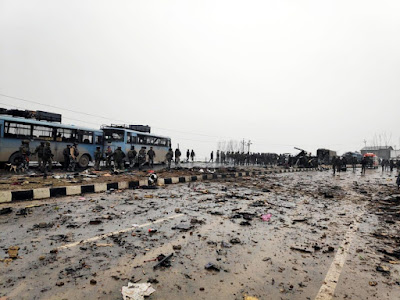With
innovations in teaching methods, the once simple system has essentially become
an anachronism that reminds us how much technology has invaded all spheres of
classroom teaching. Indeed, classroom teaching is a term that has rapidly
evolved with pioneering developments in technology.
Despite
changing pedagogical methods and continual advances that threaten the existence
of an actual classroom, contact classes and lectures delivered in real-time are
still effectual. Lectures pre-recorded and peddled to students for study at
home come with a dangerous side-effect – there is no provision for the teacher
to monitor the progress of the student.
As we inch
closer towards absolute technological dependence, should we picture a situation
in which technology stifles artistic expression? Will there be a time when it
encroaches upon the rudiments established by conventional techniques of the
past?
Let’s
take a look at the scenario of classroom teaching in 2050.
It wouldn’t
be unreasonable to imagine a complete technological takeover in terms of mode
of delivery. Using visual media to help students grasp concepts better, is
already becoming a huge trend. For sure, the better days of this trend are in
front of it. Expecting students to run an AutoCAD simulation in their heads
from the (often poorly drawn) blueprint on the chalkboard is the surest way to
lose their involvement. To reduce this load on students, teachers
will make use of miniature models and simulations in 2050. They will
factor in the the headway being made in 3-D printing technology and students
will no longer have to rely on the artistic caliber of their teachers to
communicate difficult concepts.
Classroom
logistics could also become much less spontaneous and more streamlined. Every
person that is about to walk into a classroom notices the glint of green on the
petite, unassuming machine on the wall—the biometric scanner. It decongests the
hustle-bustle and also saves time. The teacher will just need to retrieve the
attendance information, neatly curated by the software, to know which student
couldn’t care enough to be punctual.
The usage of
the biometric system won’t just be limited to the students. Teachers and other
staff members themselves would be required to check into the biometric machine
every morning. Several institutions dock the day’s pay if the teacher turns up
too late – this could easily be monitored with the help of the data recorded in
biometric systems.
Class
scheduling will no longer be a clutter with last-minute scrambling. Algorithms
will consolidate the data from the day’s biometric system, and automatically
fill vacant slots (from teachers who didn’t turn up) with alternate subjects
after checking the availability of those teachers. The concerned teacher
could promptly receive a message telling him where he needs to go and when.
Optimization
in scheduling ensures that neither the faculty nor the student’s time is
squandered.
The essence
of classroom teaching can be boiled down to one thing – tangibility. A smart
classroom is one that retains this ethos. Recorded material, no doubt has it’s
place as a supplement, but when it becomes the primary mode of address, it will
mark the end of a tried and tested pedagogical system.
Notebooks
have been around for as long as we school-goers can remember. However,
expect notebooks and any forms of hard copies to dwindle, courtesy – portable
electronic devices. Students will no longer be required to carry notebooks;
instead, they would carry tablets which they would use as writing pads, or to
quickly refer to previous notes. Notebooks will begin to wane and subsequently,
their untarnished legacy will be laid to rest. Flat screens or projector
screens will adorn the walls once painted green and scrawled on with chalk.
One of the
primary goals of an ideal classroom is to focus teaching on eliminating the
imperfections of each and every student. Thirty years down the line, expect
teaching to become entirely aptitude-aligned. Every student takes certain
preliminary aptitude tests and subsequently, gets a detailed report on his
performance. The analysis would outline where the individual would need to
improve, and so he would then need to take those classes alone. Teaching
affiliated specifically with the individual’s aptitude for a topic would ensure
complete, all-round proficiency.
Classroom
teaching is going to transform substantially three decades down the line. But
we need to make a conscious, scrupulous effort to retain the true identity of
classroom teaching that has endeared itself to us.
Classroom
teaching in 2050 will be drastically different from what we are used to now. It
will certainly involve a lot of online education! Read more about online
education here.


No comments:
Post a Comment